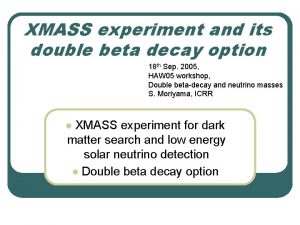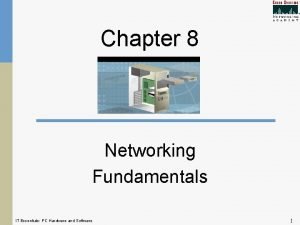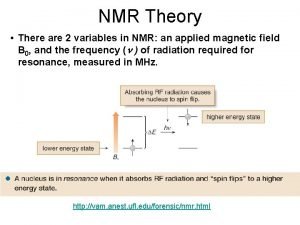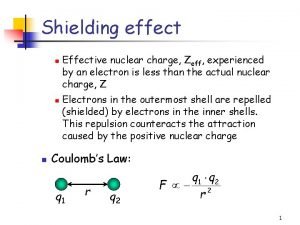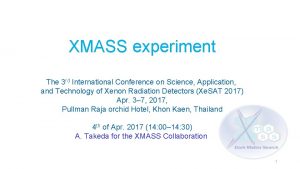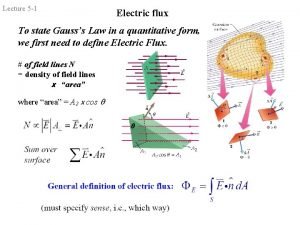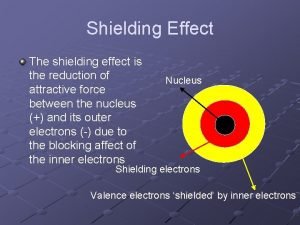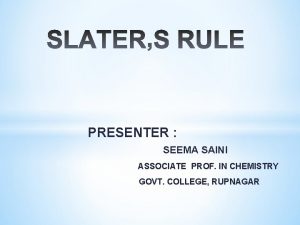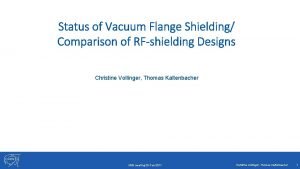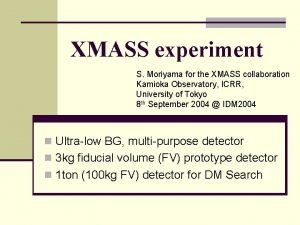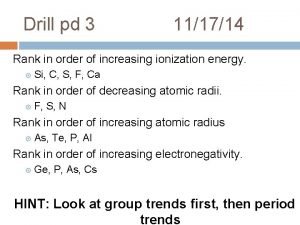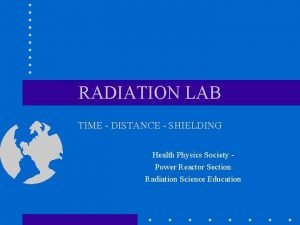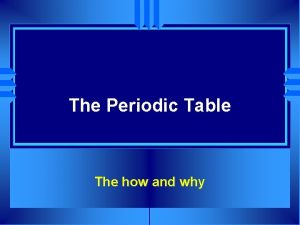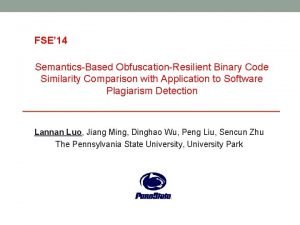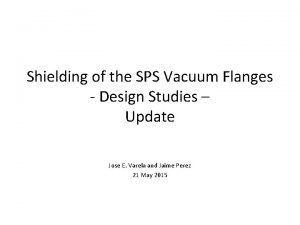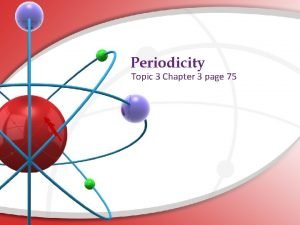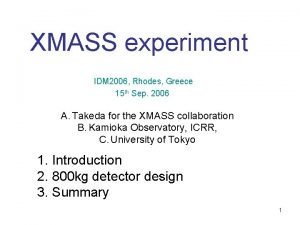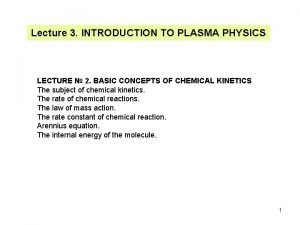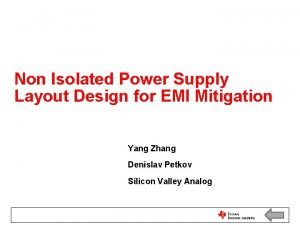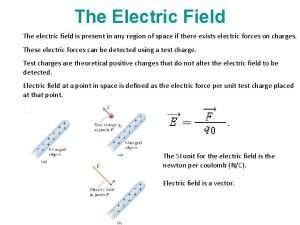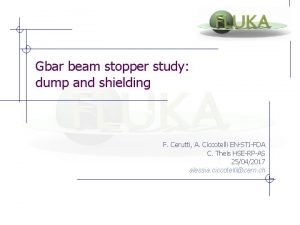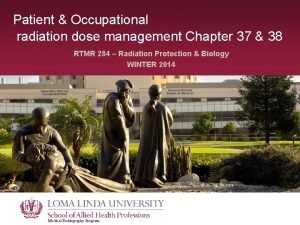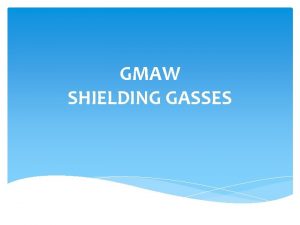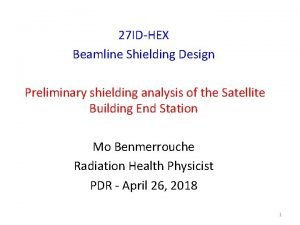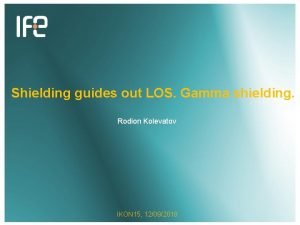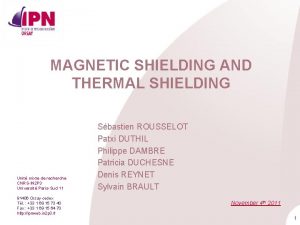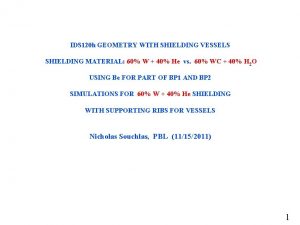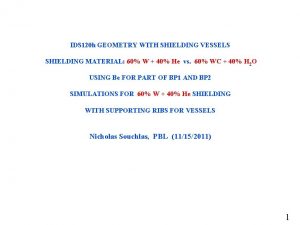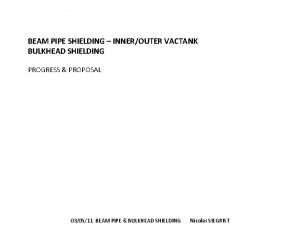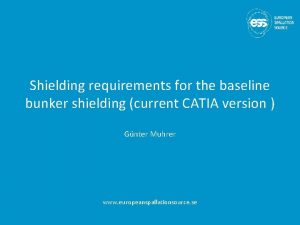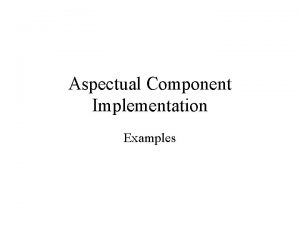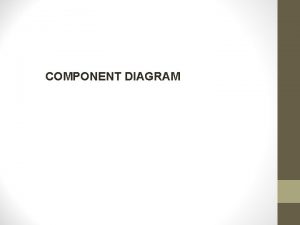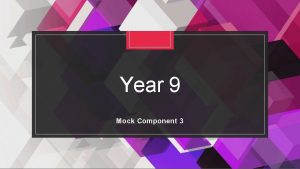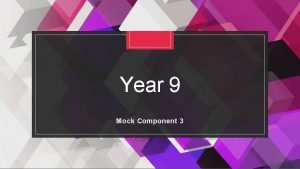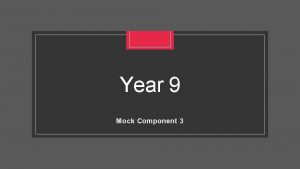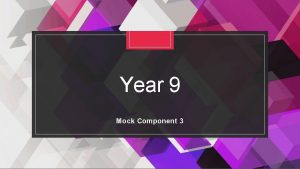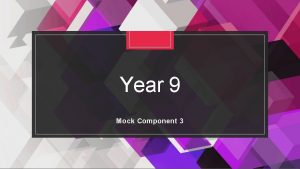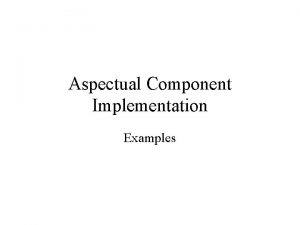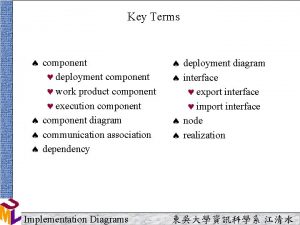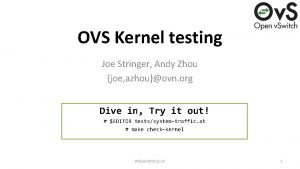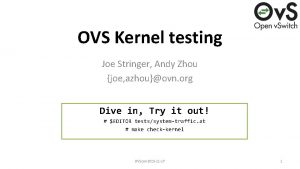An Update on Component Shielding Effectiveness Testing Joe
































- Slides: 32

An Update on Component Shielding Effectiveness Testing Joe Butler Chomerics Division of Parker Hannifin Corp. 10/24/2020

Shielding Effectiveness • Commercial EMI Shielding Products • • EMI gaskets Conductive compounds Conductive coatings Shielded windows and air ventilation panels None of these products are typically measured by an industry consensus, shielding effectiveness test method. Vendor utilized test methods vary by manufacturer. 2

Shielding Effectiveness Test Standards 3 • MIL-STD-285 – Shelters - Withdrawn • MIL-DTL-83528 – Conductive Elastomer EMI Gasket Radiated Field and DC Volume Resistivity • NSA 65 -6, 73 -2 A, 94 -106 – Tempest Shelters • IEEE STD 299 – Shelters (replaced MIL-STD-285) • IEEE STD 1302 – Guide to EMI Gasket Test Methods • ASTM D 4935 – Planar Materials - Withdrawn • ASTM E 1851 – Shelters (duplicates MIL-STD-285) • Reverberation Chamber Tests, TEM Cells • SAE ARP 1705 – EMI Gasket Transfer Impedance • SAE ARP 1173 – EMI Gasket Radiated Field • EN 50147 -1 – Anechoic Chambers • IEC 61000 -5 -7 - Enclosures • VG 95373 Part 15 – Small Enclosures • SCTE 48 -1 -2006 – GTEM Cell Tests

Shielding Effectiveness EMI Gaskets • DC volume resistivity • MIL - DTL - 83528 • SAE- AIR -1404 warning on relationship between resistivity and shielding effectiveness • Transfer impedance • SAE- ARP-1705 • Radiated field tests • MIL-DTL-83528 • MIL-STD-285 or IEEE-STD-299 Modified • Stirred mode/reverberation chamber testing • Enclosure or equipment level testing 4

Shielding Effectiveness Conductive Compounds • DC Volume Resistivity • Joint Through-Resistance • Radiated Field Tests • MIL-STD-285 or IEEE-STD-299 Modified • Enclosure or Equipment Level Tests 5

Shielding Effectiveness Conductive Coatings • DC surface resistivity • ohms per square @ recommended dry film thickness • ASTM D 4935 – recently withdrawn • Radiated field tests • MIL-STD-285 or IEEE-STD-299 Modified • Stirred mode/reverberation chamber tests • Enclosure or equipment level tests 6

Shielding Effectiveness Shielded Windows & Air Ventilation Panels • Radiated field tests • MIL-STD-285 or IEEE-STD-299, Modified • Stirred mode/reverberation chamber tests • Enclosure or equipment level tests 7

Shielding Effectiveness Current standards activity • IEEE EMC Society actively working on revisions to IEEE STD 299 to create three sections addressing three sizes of enclosures • SAE AE-4 Committee has discussed revising and updating SAE ARP 1173 • ASTM Committee D 09 has stopped EMC standards development activities 8

Shielding Effectiveness Ml. L-STD-285 (1956) • Frequencies: 150 k. Hz - 200 k. Hz, 1 MHz, 18 MHz, 400 MHz • Officially withdrawn but still used in industry • Many undocumented/unapproved derivatives used “modified” MIL STD 285 • Used extensively to rate shielding performance of EMI gaskets, conductive coatings, shielded vents and windows 9

Shielding Effectiveness US National Security Agency Standards NSA 65 -6, NSA 73 -2 A, NSA 95 -106 • NSA 65 -6 (1964) - 1 k. Hz - 10 GHz, 100 d. B, 10 k. Hz - 10 GHz • NSA 73 -2 A (1972) - 1 k. Hz - 1 GHz, 50 d. B, 10 k. Hz - 100 MHz • NSA 94 -106 (1994) - 1 k. Hz – 10 GHz, 100 d. B, 10 k. Hz – 10 GHz, (replaced NSA 65 -6) 10

Shielding Effectiveness IEEE STD 299 (1991) • Frequency range 9 k. Hz - 18 GHz, (extendable to 50 Hz and 100 GHz) • Developed to replace MIL-STD-285 • Working group actively working on revisions • Standard divided into separate parts for different size enclosures 11

Shielding Effectiveness ASTM E 1851 (1997) • Frequency bands - 140 - 160 k. Hz, 14 - 16 MHz, 300 - 500 MHz, 900 - 1000 MHz, 8. 5 GHz - 10. 5 GHz • Developed by US military shelter manufacturers as replacement for “retired” MIL STD 285 because they felt the proposed replacement, IEEE STD 299, was too complicated 12

Shielding Effectiveness IEC 61000 -5 -7 (2001) Installation and mitigation guidelines - Degrees of protection provided by enclosures against electromagnetic disturbances (EM code) • Frequency range 10 k. Hz - 40 GHz • Establishes shielding code designation EMABCDEF where ABCDEF indicates 6 frequency bands where a shielding designator value from < 10 d. B = 0, to > 100 d. B = 9, is assigned 13

Shielding Effectiveness IEC 61000 -5 -7 Setup 14

Shielding Effectiveness • German VG 95373 -15 (1998) • Bundeswehr equipment procurement • Frequency ranges: 30 Hz - 3 MHz, 30 MHz - 1 GHz • Society of Cable Telecommunications Engineers (SCTE) IPS-TP-212 (1996) • RF ingress shielding measurement • Frequencies: 54 MHz, 100 MHz, 200 MHz, 400 MHz, 700 MHz, 1000 MHz 15

Shielding Effectiveness German VG 95373 -15 Setup 16

Shielding Effectiveness SCTE IPS-TP- 212 Setup 17

Shielding Effectiveness ASTM D 4935 Test Setup 18

Shielding Effectiveness ASTM D 4935 Test Samples 19

Shielding Effectiveness Dual TEM Cell Test Setup 20

Shielding Effectiveness MIL-DTL-83528 Setup 21

Chomerics Shielding Effectiveness Test Setup 22

23

24

Shielding Effectiveness SAE ARP 1173 Setup 25

Shielding Effectiveness SAE ARP 1705 Setup 26

Shielding Effectiveness IEEE STD 1302 Gasket Comparison of Test Methods 27

Shielding Effectiveness Stirred Mode Chamber 28

Shielding Effectiveness Some Relevant Reference Papers • Stirred Mode – Crawford, Koepke, NBS Tech Note 1092, April 1986; Hatfield, Freyer, Rowan, 1992 & 1994 EMCS Symposium • Reverberation Chambers – Holloway, Ladbury, Coder, Koepke, Hill – EMCS Transactions, • Reverberation Chambers – Holloway, Ladbury, Koepke, Hill, Garzia – EMCS Transactions, May 2003 29

Shielding Effectiveness Current Actions of Shielding Component Customers • Not only asking for assurances of long term reliability but detailing test protocols to qualify products, e. g. , accelerated life testing - high/low temperature cycling, heat/humidity, temperature soak • More requesting UL 94 V-0 flammability ratings • Increasing amount of individual corporate “Green” initiatives prohibiting certain hazardous substances • European Union Ro. HS requirements • Request for detailed elemental composition of materials beyond MSDS details • Requests for shielding data against aluminum flanges with trivalent chromate treatment vs. hexavalent chromate 30

Shielding Effectiveness Future Actions of Shielding Component Vendors • Will try to maintain the status quo • Will continue to have dwindling involvement in the SE standards development within SAE and IEEE • If reverberation chamber shielding test data is necessary, most manufacturers will use outside test labs 31

Shielding Effectiveness Thanks for your time! Questions? ? ? Joe Butler JButler@Parker. com 781 -939 -4267 www. chomerics. com 32
 Component testing is a black box testing
Component testing is a black box testing Immediate update and deferred update in dbms
Immediate update and deferred update in dbms Self shielding
Self shielding It essentials chapter 8
It essentials chapter 8 What is a multiplet in nmr
What is a multiplet in nmr Electron charge
Electron charge Self shielding
Self shielding Electrostatic shielding
Electrostatic shielding Shielding effect definition
Shielding effect definition Zeff of chlorine
Zeff of chlorine Flange shielding
Flange shielding Types of physical media
Types of physical media Self shielding
Self shielding Electronegativity of pd
Electronegativity of pd Time distance shielding
Time distance shielding Electron shielding
Electron shielding Jplag vs moss
Jplag vs moss Flange shielding
Flange shielding Shielding effect
Shielding effect Self shielding
Self shielding Saha equation in plasma
Saha equation in plasma Layout shielding
Layout shielding Electric field inside a conductor
Electric field inside a conductor Beam stopper
Beam stopper Gonad shielding
Gonad shielding Decision table testing in software testing
Decision table testing in software testing Decision table based testing in software testing
Decision table based testing in software testing Positive and negative testing
Positive and negative testing Neighborhood integration testing
Neighborhood integration testing Decision table testing examples
Decision table testing examples Domain testing
Domain testing Rigorous testing in software testing
Rigorous testing in software testing Static testing and dynamic testing
Static testing and dynamic testing


